This isn’t Dr. Curien’s Mansion
The Mansion of Hidden Souls hit the Saturn in early December 1994, barely a month after the Saturn launched on its epic – but fleeting – journey as the most sophisticated machine ever to hit gaming. The Mansion later came to the West in November 1995, hitting both Europe and North America at roughly the same time. The game is a loose sequel to the SEGA CD hit (well, we can pretend that it was a hit) Mansion of Hidden Souls and was one of the few games that got multiple localizations for various European territories. It hit shelves in the United Kingdom, Germany, France, and Spain, fully translated and voice-acted in those countries’ languages, with matching boxes to boot. On paper, the game’s pedigree certainly seems strong, considering the amount of care SEGA put in to its western release.
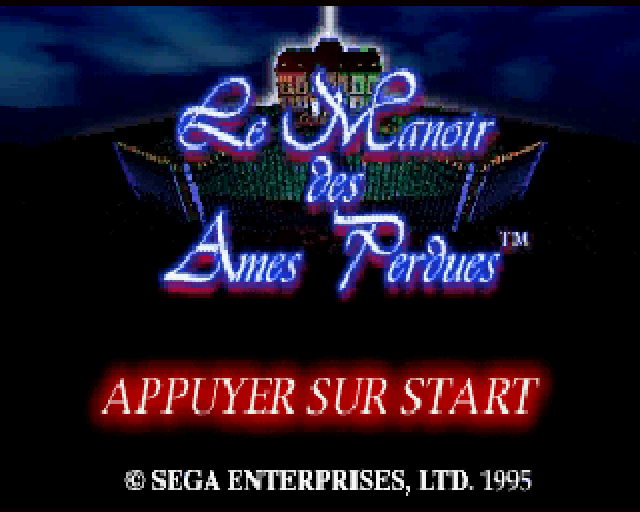
This Mansion Isn’t in Racoon City
But just what is going on here? For starters, The Mansion of Hidden Souls is a pre-rendered graphical FMV mystery game set in a curious mansion in the middle of a strange, ethereal somewhere. The mansion’s foyer and hallways have a very Victorian look and feel, but the individual rooms look more modern or even plain and consequently somewhat out of place with the rest of the big house. They are, however, fashioned after the personality of their occupants. Each room has a single resident, and they are as varied as the rooms they occupy. The giant library on the main floor is where the Elder lives. He appears to be in charge at the mansion, and his room, full of tall bookshelves and an elegant sitting area by a fireplace, is befitting a man of his stature.
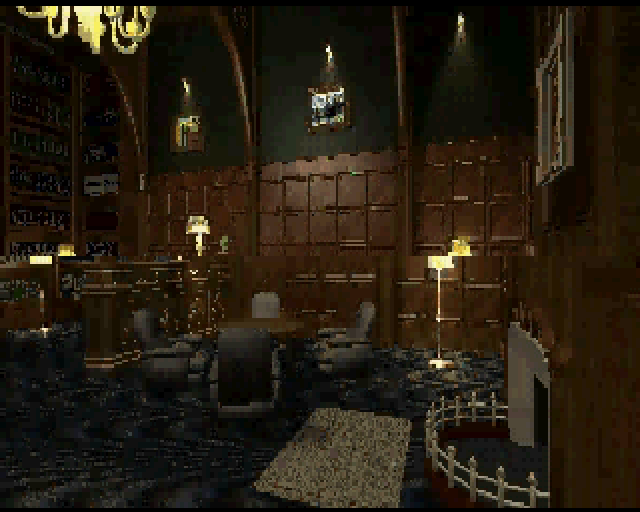
Everyone living in the mansion is here for different reasons; these purposes you must tease out as you unravel the game’s story. Some have come here to escape. Some have come to hide. Over and above the Elder, the main floor is home to little Cathy, whose room is cheery and pink, and Raymond, a middle-aged adventurer in a room full of trinkets and mementos from his travels. Your rather plain and functional room is on the main floor as well, right near the grandfather clock. On the second floor we find the fortune teller Jossie in her game room, complete with a pool table, wet bar, and comfortable parlor chairs. Her room is also home to the frame of the black painting from the SEGA CD game, though the actual painting (a hint system in the original game) is missing. Your companion Mike also has a green-walled room upstairs, with books and a piano. The scrawny, businesslike hermit Nezumi calls the upstairs home, as does gun enthusiast and shooting range connoisseur Danny. Lastly, the young Sean has a plain-looking bedroom upstairs as well.
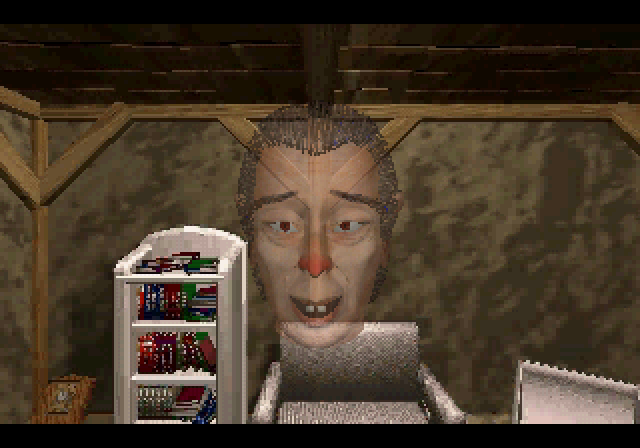
Like you, the inhabitants have all been turned into blue-winged butterflies by the power of the mansion. They represent the souls of people in the real world, but you won’t often notice this while playing. The game is viewed from a first-person perspective so you don’t see yourself, and all the other butterflies you interact with will appear before you as translucent human heads. They have their own distinct personalities, looks, accents, backstories, and motivations, some of which may become apparent to you as you make choices along you adventure. But just what is the mansion and what does it represent? Is it a boundary between the world of the living and that of the departed? A purgatory of sorts? Certainly, a spooky place to go on exploring on one’s own.
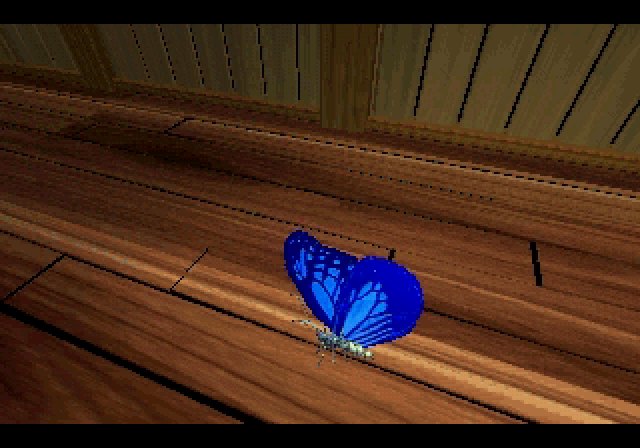
Mike is With You – You are never Alone in the Dark
Ah, but you aren’t exploring it alone. You play as Jun, and almost immediately upon your arrival, the mansion’s Elder pairs you off with a helper of sorts named Mike. Mike works with you to solve the mystery of the mansion and sometimes provides leading questions to help you on your quest. He is also integral to the story itself.
As for the story, it is loosely connected with what took place in the SEGA CD game, and veterans of the original adventure will likely be pleased in how the two stories are integrated. Unlike before however, this time, you are a resident of the mansion rather than an outsider. The mansion is the same as that in the original, but being a mystical house means that it is never the same with each visit… and indeed, there have been some internal changes since the first adventure. As you enter the mansion, the bright full moon has turned blood red. This is a concern for the Elder, as the moon gives the mansion its power. No moon, no power. No power, and the mansion, along with everyone in it, vanishes forever. The Elder tasks you with investigating the moon and hopefully restoring its bright glare.
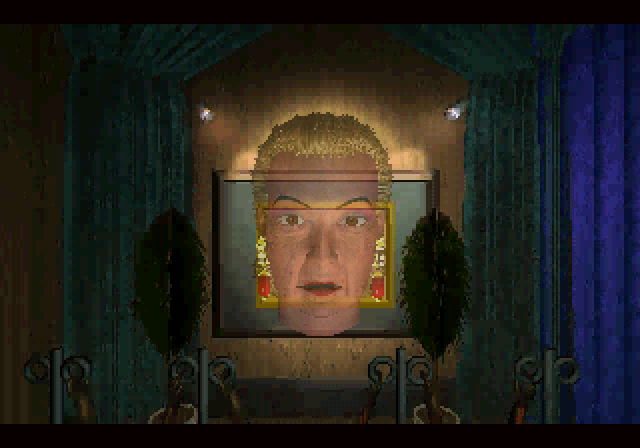
Your investigation leads you to interactions with all the above-mentioned houseguests, and as you make progress, you begin to understand each resident on an increasingly intimate level. Fittingly, these aren’t people without problems. Some dark themes are touched upon here which, and coupled with the game’s creepy setting, really make for a nice Halloween playthrough. As you delve into your neighbors’ past, there is the odd mention of a painter who apparently lives in the house… but that’s impossible, as you’ve checked every room, and all are occupied by the current houseguests.
The story isn’t overly long to see from beginning through to conclusion, and surprisingly for an FMV game, the choices you make can alter the adventure somewhat. Perhaps an attempt to diversity from the ‘see it once, never play it again’ issue that plagues FMV adventures, choices not only change outcomes but also serve to reveal different aspects of the residents’ backstories. Thus, incentive to replay the game more than once. Nice.
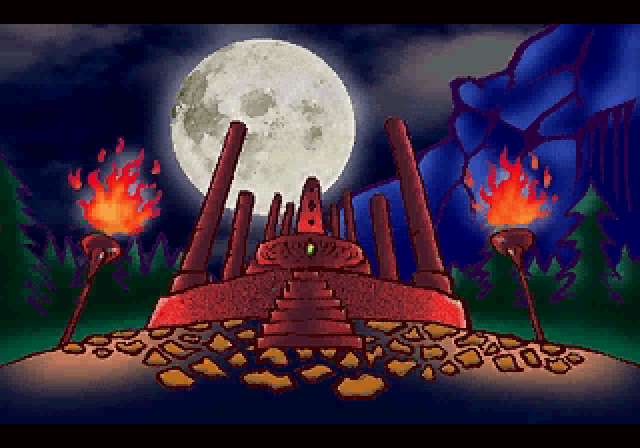
You are The Butterfly – not The Crow
The gameplay is very standard FMV fare – if you’ve played Torico / Lunacy or D, you’ll know exactly what to expect from the now-dead genre. Movement is restricted to invisible rails with junction points. Orient yourself to face the direction you wish to go and press up on the gamepad to move from point to point, watching an FMV clip of your movement. Make your next choice about which way you wish to go next once you come to a stop, and rinse and repeat. Players used to the free-roaming 3D games of today will potentially be frustrated with this, as though you can see various interesting nooks and crannies in the mansion, you can only move and stop wherever those pre-determined rails and junctions take you. On occasion you will encounter items you can interact with that are important to the story. A chime plays when you come across such an item, and if it’s an item you can collect at that point in the story, then the item is added to your inventory. Otherwise, you will simply zoom away again, making a mental note where the item is, in case it becomes meaningful later. Not every item is needed on every playthrough.
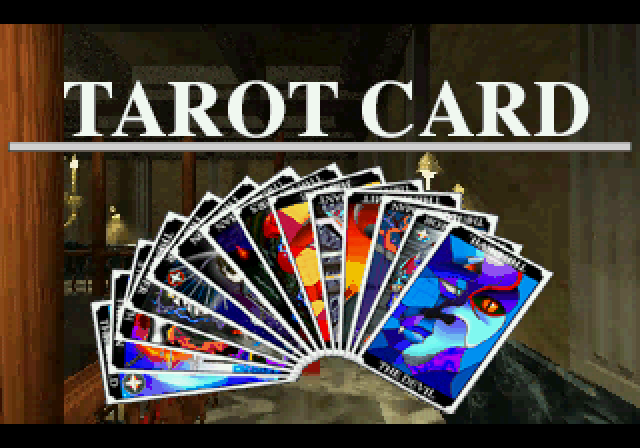
Calling up your inventory is accomplished by pressing the X button. Left or right cycles through all available items, and pressing the A button uses the selected item, if it’s possible to use in that moment. If not, the item simply returns to inventory. Because of the super scripted nature of FMV games, most items can only be used in one specific, predetermined moment. Thus, the few items to be found are all tools to drive the story forward, as there is no combat, health points, or any other mechanic to manage.
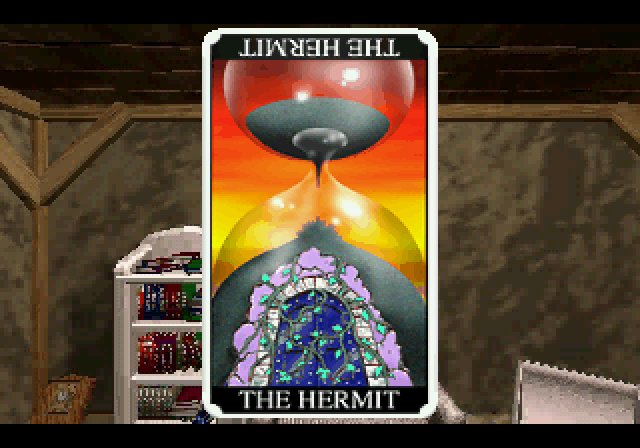
Not long after their encounter with the Elder, Jun and Mike meet Jossie the fortune teller. She resides in the upstairs game room parlor, and on your first meeting, she gifts you a deck of tarot cards. These are part of your inventory and can be called up at any time, acting as a highly obscure, ultimately vague and high-level hint system. Finding yourself in a situation where you aren’t sure about a resident? Pull up your deck of cards and see which one is drawn! Mike typically reads out the card, and sometimes makes a general comment, too. For example, Jossie seems to cause you to draw The Magician card in her presence, offering a clue as to what she is about. The cards are ultimately not necessary to complete the game but do add an additional level of mystique to the adventure for those who choose to draw, interpret, and believe in the heart of the cards. Ahem!
When starting a new game, the player must select whether to play in Easy or Normal Mode. From time to time in your interactions with mansion’s residents, they will pose questions – occasionally mundane; at times profound. The questions are sometimes plain and at other times confusing and unclear. You can then answer: the A button represents a ‘yes’ response and the C button is a ‘no’. Naturally, this impacts how the story unfolds, and can lead to the adventure advancing, more backstory exposition, and in some cases, even your death! The difference between game modes is that Easy Mode presents a small controller icon on-screen each time a question is asked, prompting your Yes (A) or No (C) response. In Normal Mode, no such hint will appear, and a third option – decline to answer / say nothing – is available. If you don’t press A or C quickly enough, the game will continue as if you had offered silence as a response to the question, and of course this has its own set of consequences. With questions not always being obvious, this mechanic demands a sharp focus from the player.
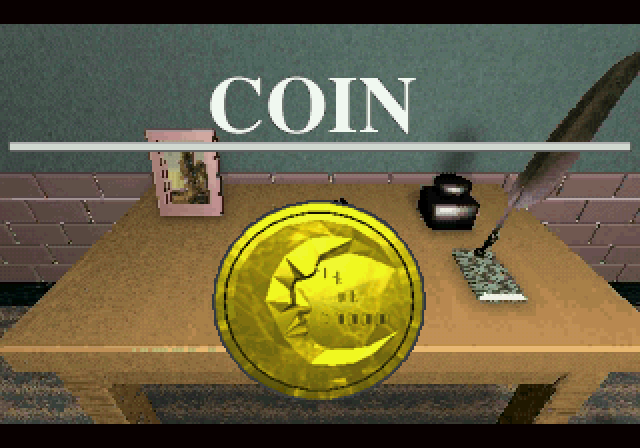
The timed responses serve to put you on a particular path forward, in-game. Sometimes, if all the ‘wrong’ choices are made, then the next room you visit will suddenly be a strange white room, adorned with various paintings. The painter then strikes! Your precious blue wings fall off, and Jun meets his untimely end at the hands of the mysterious artist. Although it is obviously frustrating to die this way, it does make you re-think how you handled questions leading up to your demise, and prompts you to try again. Thankfully the game employs a save system. In Jun’s room, on his bedside table lies a diary, and up to three adventures can be recorded (saved) at a time, anytime Jun visits.
That said, do not be afraid to experiment with your answers. Sometimes, what feels like ‘wrong’ answers can prompt residents to open up to you and share details of their past. These exposition sequences sometimes trigger still images as cutscenes, enhancing plot delivery. A very nice touch.
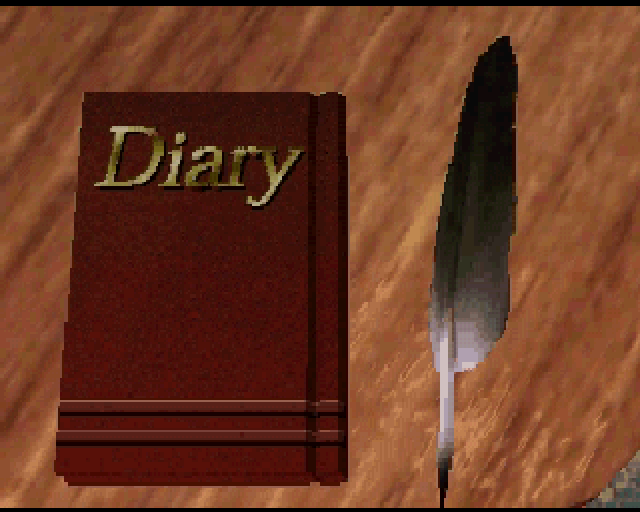
Another word about the limiting nature of this FMV adventure – when the story needs to keep you away from interacting with certain characters to herd you in the right direction, certain doors will become locked and inaccessible. This can at times be frustrating as there is no real in-game reason for doors to be locked. Similarly, residents won’t always appear in their rooms to speak with you. You will find yourself visiting seemingly empty rooms on a regular basis as you figure out what your next steps are.
No Nocturnes in this Moonlight
On a technical level, the game is put together quite well. Video quality is good, but ‘good’ is of course subjective. Those coming in straight from the SEGA CD Mansion game will find the FMV quality to be stupendously good – a night-and-day upgrade over what the 16-bit CD add-on offers. Those used to modern games will cringe at the rather plain mansion surrounds and the video artifacts that are present throughout. Overall, however, video quality is good for what is an early Saturn title heavily relying on its visuals to deliver its experience to the gamer.
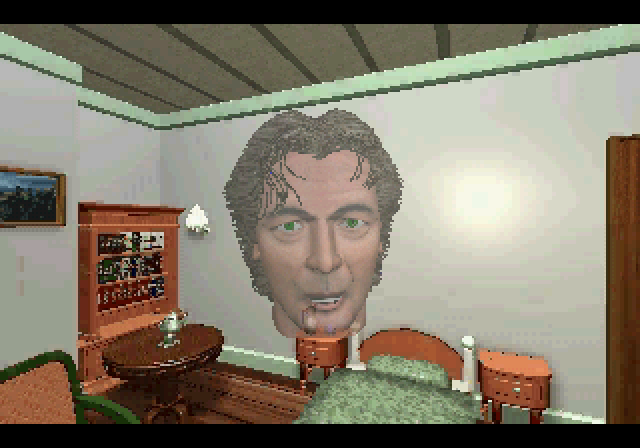
There is no text through the game; all lines are delivered verbally. It is unlikely that the characters’ lips were ever meant to synch up with their spoken lines in the Japanese original, but in the English version, they are noticeably out of step. It isn’t just the movement of the lips compared to the words being spoken – that would have been consistent with games of the time – but at times, the spoken line is finished and the speaking animation continues for a good second or two. Certainly long enough to be noticed.
The voice acting itself is generally good. Each character has a distinct voice and accent, and their line delivery isn’t overly exaggerated in Resident Evil’s so-bad-that-it’s-good style. Some characters intonate loud and clear – Mike and Cathy especially – while others are more muted and employ a much heavier, harder to understand accent – looking at you, Elder!
Finally, the music in-game is suitable and appropriate, though generally only plays in the mansion’s various rooms. In the mansion proper, all that is heard is the slow tic-toc of the grandfather clock. Each of the mansion’s inhabitants seems to have their own theme. The major flaw here is that the background music sometimes (not always) comes across as much louder than the voice acting and coupled with the heavy accents of some of the voice actors, it becomes exceedingly difficult to make out what is being said. This detracts from the experience somewhat, and unfortunately, there are no subtitles in this game. Overall, in terms of presentation, The Mansion of Hidden Souls is quite good for a 1994 Saturn title. In terms of improvements, this is a game that would have surely benefitted from MPEG Card support even if optional, as well as the option to toggle subtitles on/off.
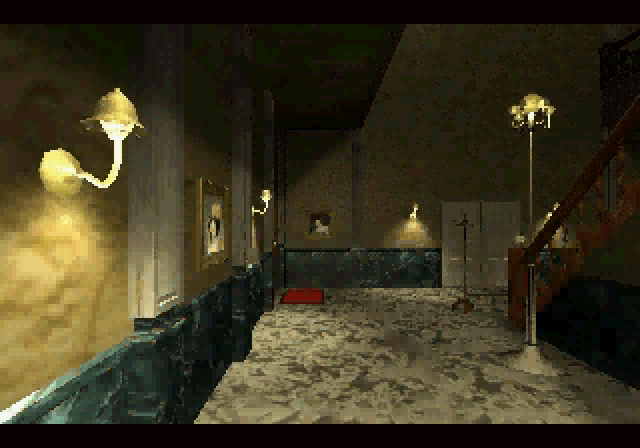
It’s more Deep Mystery, than Deep Fear
Whichever region you are in, this game is one of the cheaper Saturn titles to pick up. As a Halloween game, it fits the bill very nicely for those looking for something different. It isn’t overly scary though it does draw upon many Halloween themes. Should you choose to play, the strong recommendation here is to forego any walkthroughs or let’s plays. Games of this type are only ever fresh the first time through. Reading a walkthrough or watching a let’s play will spoil the experience for Mansion first-timers.
That said, while fans of the SEGA CD original should step right up, newcomers don’t need to experience the original to have a good time here. The title may have felt out of place in its time as fans were expecting action-packed, pulse-pounding, bleeding edge 3D games out of their shiny new 32-bit system, but this isn’t the case any longer. Today, the game is a neat window into a genre that shone brightly and vanished just as quickly in the mid-90s. Mysterious, arcane, and with an… intense ending, this will do fine once you’ve finished the more well-known Halloween games. Those that prefer adrenaline-pumping, zombie-filled Halloween games need not apply here, but for those of you who prefer a slower-paced, story-driven, 90s-time capsule of a game, you’ll easily enjoy yourself in The Mansion of Hidden Souls.
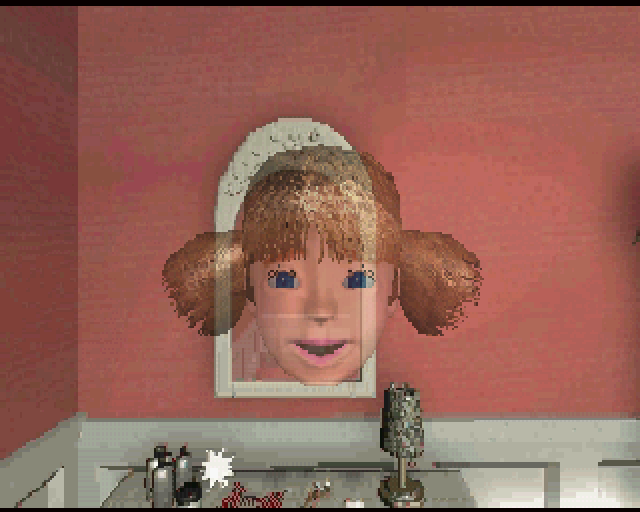
Tarot Cards – The Art of Cartomancy
Tarot Cards have been around for centuries, initially serving as implements for card games before being used for the art of divination. Today, tarot card decks are divided into Major and Minor Arcana categories. The Minor Arcana cards are very similar to modern playing cards, consisting of ten counting cards (1-10) and four face cards (King, Queen, Knight, Page) in four suits, for a total of 56 cards. The Major Arcana (Greater Secrets) cards are 22 unique, un-suited cards, and it is these that are featured in The Mansion of Hidden Souls. Most (not all) cards are used in the game, and the North American manual provides light and concise interpretations of the meaning of each card. Cards’ meanings also change depending on which way up they present themselves, though this level of complexity is not included in the Saturn game. Tarot enthusiasts should be able to use the cards to uncover each houseguest’s true nature, while tarot amateurs can refer to the manual for spiritual guidance.
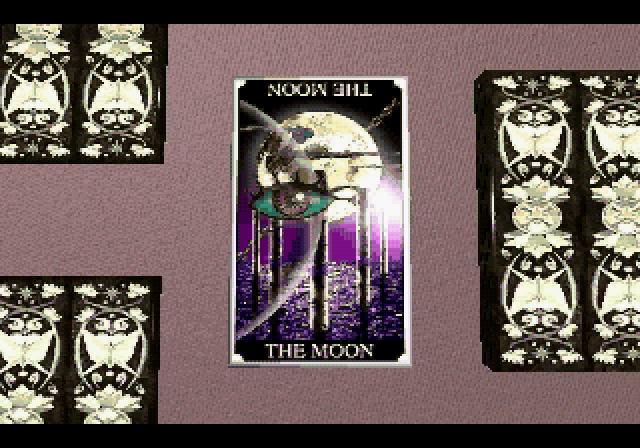
Separated at Birth!?
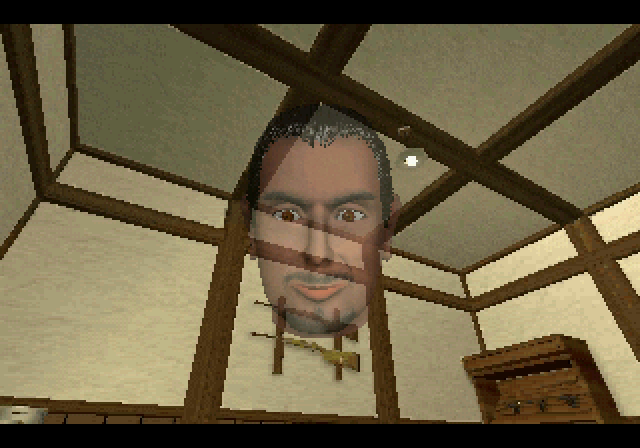
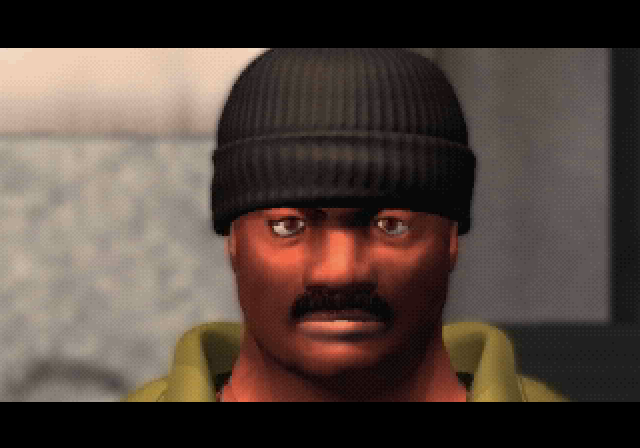
The Mansion of Hidden Souls‘ Danny (on left) appears very similar to Danny from Deep Fear (right). Are they related?? There is no official word, but they appear eerily similar, from the same brown eye color to the trimmed facial hair. It is entirely possible that while Deep Fear’s Danny Reynolds sleeps, he becomes a butterfly and enters The Mansion of Hidden Souls.
Don’t Be An Ask-hole
It is possible to answer in the negative / choose the obviously ‘incorrect’ answer at every point. Doing so can make you miss out on vital in-game items. For instance, you can actually decline to receive the deck of tarot cards from Jossie, and the game will proceed without them. Be overly rude and characters will leave in a huff, without giving you vital clues to make progress in your adventure. Sometimes, your lack of couth leads you to an early end. For instance, you’ll note that Sean is cultivating some plants in his room. Cross him and his carnivorous plants will take a quick bite out of your butterfly ass!
Notes from my first Playthrough
The first time I (Peter) have ever played the game, I took notes as I progressed. I met a quick Game Over on my very first attempt; here is a transcript of the notes I took during that nascent playthrough for your enjoyment / amusement. Caution: there are some spoilers ahead! Do not read if you have not played the game and intend to do so! You have been warned.
Elder asks Jun to investigate if there is anything weird in the mansion, owing to the red moon.
Mike is your companion. Cathy is the little girl on main floor. Danny is the guy upstairs – lots of guns. Josse is fortune teller on 2nd floor; deals with Tarot cards.
Your partner Mike’s room is ransacked, and he asks to see if his blue book is missing. He is upset as he borrowed it from Elder.
You find a zippo underneath a Bach book with the letter D monogram on it
Trade the coin to Rat Man (hard to understand him)
Jossi is the Fortune Teller and she is missing
The zippo has a D on it… for Dan? Dan is the scary dude in the shooting gallery. He admits to stealing the blue covered book, and says it’s next door (at the Rat’s room)
I entered the rat’s room (Nozomi?) and found it to be different and empty. It had a bunch of paintings, and I lost a wing… and died. Game over. WTF???
Fun Facts!
Fun Fact: the SEGA CD Mansion of Hidden Souls is also now available on the Genesis / MegaDrive Mini 2.
Fun Fact #2: The North American The Mansion of Hidden Souls is coded with region codes J, T, and U – meaning it will load on North American, Japanese, and Asian region SEGA Saturns! Not many games were released without a regional lockout; this is one of them. Note: this only applies to the North American version of the game. Other versions are region-locked.

A Saturn fan since the beginning, Peter plays Saturn almost exclusively. For Peter, Saturn represents a moment in time where 2D games were at their best, 3D was just rising, and fascinating gaming ‘firsts’ were commonplace. There are very few Saturn games that Peter cannot find some enjoyment in!


Be the first to comment